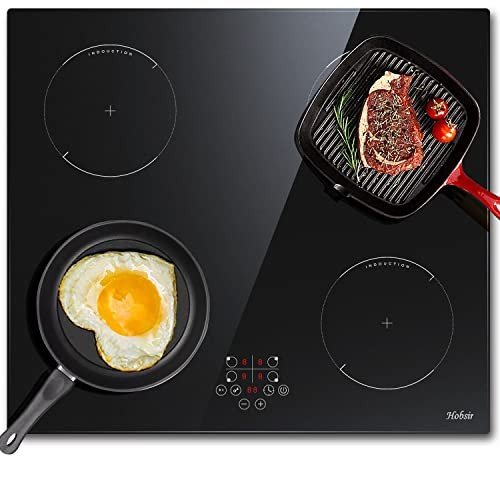Understanding Hobs and Ovens: A Comprehensive Guide for Cooking Enthusiasts
The kitchen is typically considered the heart of the home, where cooking creations come to life. 2 important parts of any kitchen are the hob and the oven. While they are both important for food preparation and cooking, lots of property owners might not completely comprehend the distinctions, functionalities, and numerous types readily available in the market today. In this short article, we will check out these home appliances in information, helping you make informed choices for your culinary needs.
Tabulation
- What is a Hob?
- 1.1 Types of Hobs
- 1.2 Benefits of Different Hob Types
- What is an Oven?
- 2.1 Types of Ovens
- 2.2 Benefits of Different Oven Types
- Choosing the Right Hob and Oven for Your Kitchen
- Often Asked Questions (FAQs)
- Conclusion
What is a Hob?
A hob, commonly understood as a cooktop, is a cooking surface that you position cookware on to prepare food. It features a variety of heating elements and is often set up on counter tops. In modern-day kitchen areas, hobs can be found in different styles, innovations, and performances.
1.1 Types of Hobs
There are several types of hobs offered in the market:
| Type | Description |
|---|---|
| Gas Hob | Utilizes burner for cooking, providing precise temperature level control. |
| Electric Hob | Operates utilizing electrical heating components, typically seen in solid or glowing forms. |
| Induction Hob | Utilizes electromagnetic fields to heat pots and pans straight, promoting energy performance. |
| Ceramic Hob | Functions a smooth glass top, utilizing electric coils beneath the surface area. |
| Strong Plate Hob | Traditional electric hobs with exposed metal plates that heat up. |
1.2 Benefits of Different Hob Types
Gas Hobs:
- Quick heating & cooling.
- Visual flame control for accurate cooking.
Electric Hobs:
- Even heating; suitable for simmering and boiling.
- Easy to clean, especially flat surfaces.
Induction Hobs:
- Energy-efficient as only the pot warms up.
- Security features, such as automatic shut-off.
Ceramic Hobs:
- Attractive looks with a smooth finish.
- Even surfaces for simple cleansing.
Solid Plate Hobs:
- Cost-effective and durable.
- Helpful for fundamental cooking requirements.
What is an Oven?
An oven is a kitchen device used for baking, roasting, and broiling food. Ovens can be standalone units or built into kitchen cabinetry, supplying numerous cooking approaches that can boost or change ingredients.
2.1 Types of Ovens
Similar to hobs, there are multiple kinds of ovens, each with its advantages:
| Type | Description |
|---|---|
| Standard Oven | Runs with heating components, ideal for baking. |
| Convection Oven | Uses fans to flow hot air, cooking food evenly and quickly. |
| Microwave Oven | Cooks food using electromagnetic radiation; perfect for reheating. |
| Steam Oven | Utilizes steam to cook food, protecting moisture and nutrients. |
| Wall Oven | Built into the wall, providing convenience and visual appeal. |
2.2 Benefits of Different Oven Types
Traditional Ovens:
- Simple to use with no complex settings.
- Versatile for numerous cooking techniques.
Convection Ovens:
- Faster cooking times due to air circulation.
- Enhanced browning and crisping for baked products.
Microwave Ovens:
- Quick cooking or reheating of food.
- Energy-efficient for low-volume cooking.
Steam Ovens:
- Health-conscious cooking that retains nutrients.
- Exceptional for baking bread and cooking vegetables.
Wall Ovens:
- Convenient positioning; saves area.
- Less bending required to gain access to cooking meals.
Picking the Right Hob and Oven for Your Kitchen
When selecting a hob and oven, elements such as space, cooking design, and individual choices must be thought about. Here's a simple guide to help you select:
Factors to Consider
- Cooking Needs: Evaluate your cooking habits. Do you often bake, or is stovetop cooking more common?
- Area Availability: Measure your offered kitchen area. Some hobs or ovens may need more room than others.
- Fuel Type: Decide in between gas and electric, based on schedule and individual choices.
- Budget: Determine what you're prepared to invest and find options within that variety.
Quick Tips
- Prioritize Efficiency: Look for energy-efficient designs to reduce long-lasting expenses.
- Check out Reviews: Explore user reviews to collect viewpoints on performance and dependability.
- Consult Professionals: Seek advice from kitchen design professionals when preparing your layout.
Regularly Asked Questions (FAQs)
1. What is the difference in between a hob and an oven?
A hob is a cooking surface area usually for stovetop cooking, while an oven is an enclosed area used for baking, roasting, and broiling food.
2. Can I use any pot on an induction hob?
No, induction hobs require magnetic pots and pans. Stainless-steel and cast iron pots work, however non-magnetic materials like aluminum won't.
3. How do convection ovens vary from traditional ovens?
Convection ovens use fans to distribute hot air for even cooking, whereas traditional ovens do not have this feature.
4. Is Ovens Online to have both a hob and oven as a single system?
Yes, there are variety cookers that incorporate a hob and an oven within one appliance, offering a detailed cooking service.
5. How do I tidy my hob and oven?
The majority of hobs and ovens have actually recommended cleansing techniques depending upon their products. It is recommended to seek advice from the maker's directions for the best practices.
Comprehending the differences between hobs and ovens is vital for anybody seeking to enhance their kitchen space or improve their cooking abilities. By knowing the numerous types, their benefits, and how to select the right ones for your needs, cooking can end up being a more pleasurable and effective experience. Whether you are a knowledgeable chef or a newbie cook, the best mix of hob and oven can raise your culinary creations to new heights.

